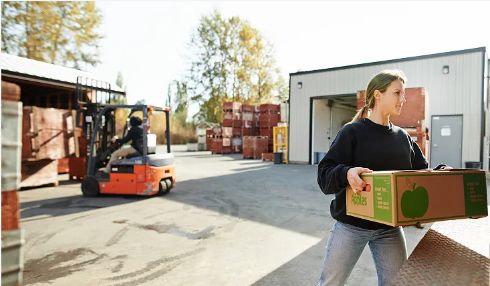In today’s highly interconnected and fast-paced global economy, warehousing and distribution services play a pivotal role in the supply chain. These services ensure that goods move efficiently from manufacturers to consumers, facilitating the seamless flow of products while minimizing costs and maximizing customer satisfaction. This article delves into the importance of warehousing and distribution services, their key functions, types, and the emerging trends shaping the industry.
The Importance of Warehousing and Distribution Services
Warehousing and distribution services are essential for businesses across various industries. They provide a buffer between production and consumption, allowing companies to store goods until they are needed. This is particularly crucial for industries with fluctuating demand or seasonal products. Effective warehousing and distribution services can significantly impact a company’s bottom line by reducing storage costs, minimizing stockouts, and enhancing delivery times.
Key Functions of Warehousing and Distribution
1.Storage: The primary function of warehousing is to store goods until they are required. This includes raw materials, work-in-progress inventory, and finished products. Warehouses ensure that products are kept in optimal conditions, maintaining their quality and shelf life.
2.Inventory Management: Warehouses play a crucial role in inventory management. They use advanced systems to track stock levels, manage reordering, and ensure that inventory is stored efficiently. This helps in reducing carrying costs and preventing overstocking or stockouts.
3.Order Fulfillment: Warehousing and distribution centers are integral to order fulfillment. They pick, pack, and ship products to customers or retail outlets. Efficient order fulfillment processes are critical for meeting customer expectations and ensuring timely deliveries.
4.Transportation and Distribution: These services include the transportation of goods from the warehouse to their final destination. This can involve various modes of transport, including road, rail, air, and sea. Distribution services ensure that products reach customers quickly and in good condition.
5.Value-Added Services: Many warehousing and distribution providers offer additional services such as packaging, labeling, assembly, and quality control. These value-added services help businesses streamline their operations and reduce the need for multiple vendors.
Types of Warehousing
1.Public Warehouses: These are operated by third-party logistics providers and are available for use by multiple companies. Public warehouses offer flexibility and scalability, making them ideal for businesses with varying storage needs.
2.Private Warehouses: Owned and operated by a single company, private warehouses provide greater control over inventory and processes. They are typically used by large businesses with stable and predictable storage requirements.
3.Bonded Warehouses: These are specially licensed warehouses where goods can be stored without paying import duties until they are sold. Bonded warehouses are particularly useful for businesses engaged in international trade.
4.Distribution Centers: These are specialized facilities focused on the rapid movement of goods. Distribution centers are strategically located near major transportation hubs to facilitate quick and efficient distribution.
5.Automated Warehouses: Leveraging advanced technologies such as robotics and AI, automated warehouses enhance efficiency and accuracy in storage and retrieval processes. They are increasingly being adopted to meet the demands of e-commerce and just-in-time delivery models.
Emerging Trends in Warehousing and Distribution
1.Automation and Robotics: The adoption of automation and robotics in warehousing is transforming the industry. Automated guided vehicles (AGVs), robotic picking systems, and drones are being used to increase efficiency, reduce labor costs, and improve accuracy.
2.Internet of Things (IoT): IoT technology is enhancing the visibility and traceability of inventory. Smart sensors and RFID tags enable real-time tracking of goods, improving inventory management and reducing losses.
3.Sustainability: There is a growing focus on sustainability in warehousing and distribution. Companies are adopting green building practices, using renewable energy sources, and optimizing transportation routes to reduce their environmental impact.
4.E-commerce Growth: The rise of e-commerce is driving demand for efficient warehousing and distribution services. Fulfillment centers are being designed to handle high volumes of small orders, and last-mile delivery solutions are being optimized to meet the expectations of online shoppers.
5.Data Analytics: Advanced data analytics and machine learning are being used to optimize warehouse operations. Predictive analytics help in demand forecasting, inventory optimization, and route planning, enabling businesses to make data-driven decisions.
Conclusion
Warehousing and distribution services are a critical component of modern supply chains, ensuring that products move efficiently from manufacturers to consumers. The industry is undergoing significant transformations driven by technological advancements, sustainability initiatives, and the growth of e-commerce. By leveraging these emerging trends, businesses can enhance their warehousing and distribution operations, reduce costs, and improve customer satisfaction. As the global economy continues to evolve, the importance of efficient and effective warehousing and distribution services will only continue to grow, making them indispensable to the success of businesses worldwide.
Post time: Jul-05-2024


